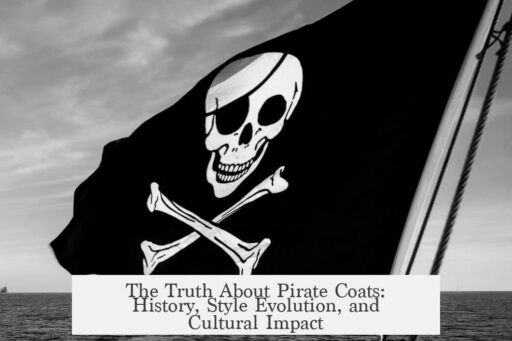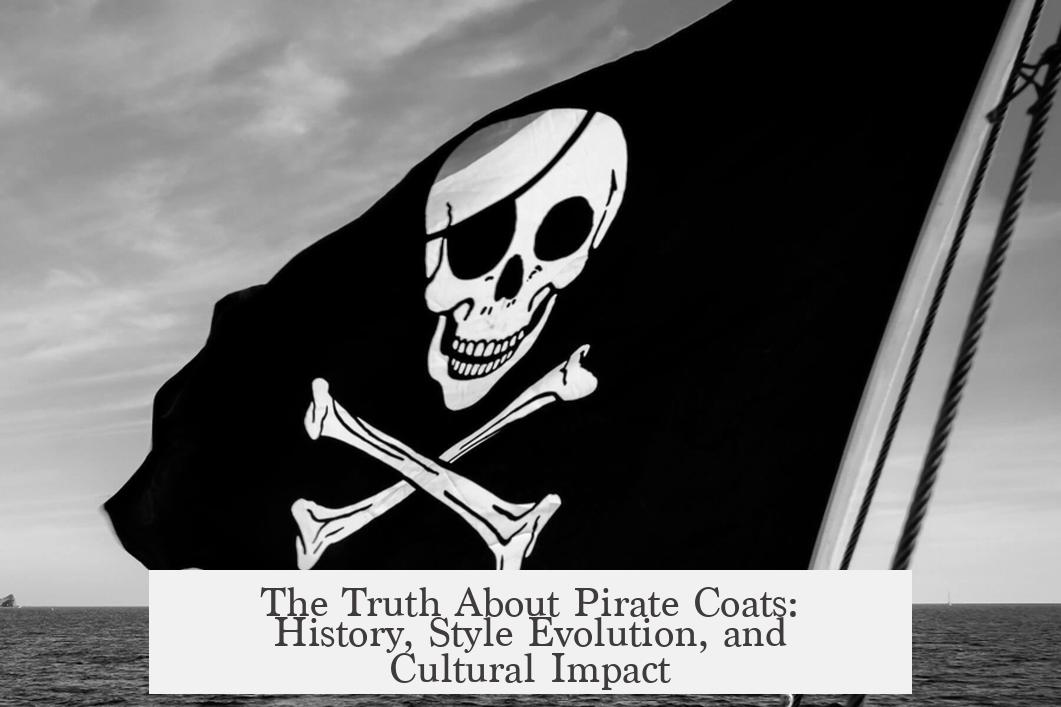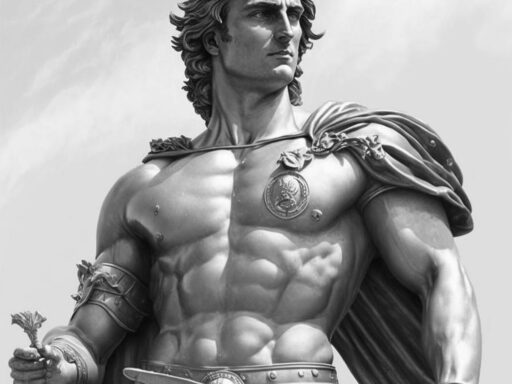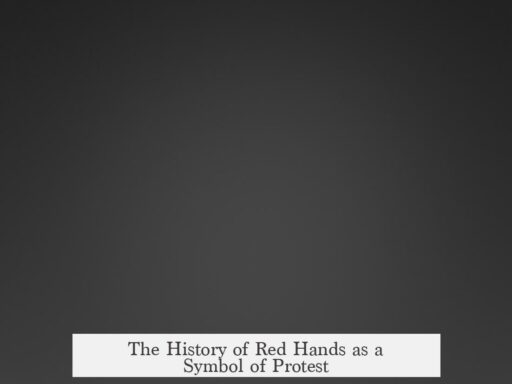The pirate coat most commonly seen today draws from the frock coat worn by gentlemen during the late 17th and early 18th centuries. This garment was indeed fashionable during the Golden Age of Piracy—the late 1600s to early 1700s—and pirate captains of European origin likely wore similar coats.
This historical frock coat acted as the top layer of men’s clothing and was widely adopted across different social ranks, including seafarers and privateers. Its design was functional yet stylish, offering protection from the elements while signifying status. The lasting image of this coat as pirate attire roots in this association but often deviates in modern depictions.
The evolution of the men’s coat began in the mid-17th century, transitioning away from the short doublet. Charles II’s 1666 court suit reforms popularized a long, loose coat inspired by Eastern styles. This coat featured small buttons down the front, large turn-back cuffs, and thigh-level pockets—sometimes vertical slits, sometimes horizontal with flaps.
By the early 18th century, the coat’s style had changed slightly. Skirts of the coat became fuller and were pleated into the side seams. Sleeves flared out at the wrist with buttoned turn-back cuffs, and pockets shifted to a horizontal orientation with flaps. Buttons spaced further apart and a slightly less snug neckline reflected evolving fashions during the Golden Age of Piracy.
Modern “pirate coats,” such as those marketed on sites like Etsy or produced by specialized costume makers like Dracula Clothing, often incorporate elements inspired by historical frock coats but rarely achieve full accuracy. The coat from Dracula Clothing, for example, features buttoned-down revers and turn-down collars typical of late 18th-century frock coats used in hunting and riding—styles appearing after the Golden Age of Piracy. Additionally, this coat is narrower in the body and arms than historical versions, with cuff buttons positioned incorrectly along the arm length rather than on top.
The Etsy coat demonstrates a closer attempt at historical style with its yellow braid trim reminiscent of late 17th-century decoration. However, it misplaces the buttons on the cuffs too low, around the wrist area rather than higher on the arm. These minor inaccuracies accumulate, making the coats less historically faithful overall.
Popular culture dramatically shapes the visual idea of pirate coats. Films depicting real pirates like William Kidd or fictional ones like Long John Silver influence public perception. Hollywood costumes emphasize dramatic flair over precise historical replication. Robert Newton’s portrayal of Long John Silver in the 1950s further embedded the stereotype of both pirate speech and style in popular imagination.
While the frock coat form is historically linked to 18th-century pirates, the contemporary pirate coat often blends different periods and styles. Inaccuracies in fit, buttons, cuffs, and trim distinguish modern versions from true historical designs.
| Aspect | Historical Pirate Coat (Frock Coat) | Modern Pirate Coat |
|---|---|---|
| Time Period | Late 17th to early 18th century | Varies, often late 18th century or stylized |
| Fit | Moderate fit, fuller skirts, flared sleeves | Tighter, slimmer cut often |
| Pockets | Horizontal with flaps, mid-thigh level | Varied, often too high or misplaced |
| Cuffs | Large turn-back cuffs, buttoned on top | Buttoned down length or at wrist |
| Collar | Less prominent, close to throat | Turn-down collar, more late 18th century |
| Trim | Period-appropriate braid and buttons | Polyester trims or mismatched trims |
The modern pirate coat captures the spirit of the frock coat but usually diverges in detail. This lack of precision owes partly to costume design aimed at theatrical impact rather than strict historical accuracy. The influence of films and literature ensures that the pirate coat remains a cultural icon, even if it’s not a perfect reproduction.
- The pirate coat is based on the frock coat worn during the Golden Age of Piracy.
- Historical coats had fuller skirts, flared sleeves, and specific pocket and cuff placement.
- Modern pirate coats often mix styles from different periods, losing historical accuracy.
- Hollywood and literature strongly influence the current image of pirate coats.
- Key details like cuff buttons, collar style, and coat cut vary between historical and modern versions.
How Accurate Is the Pirate Coat? Unraveling the Truth Behind the Swashbuckling Fashion
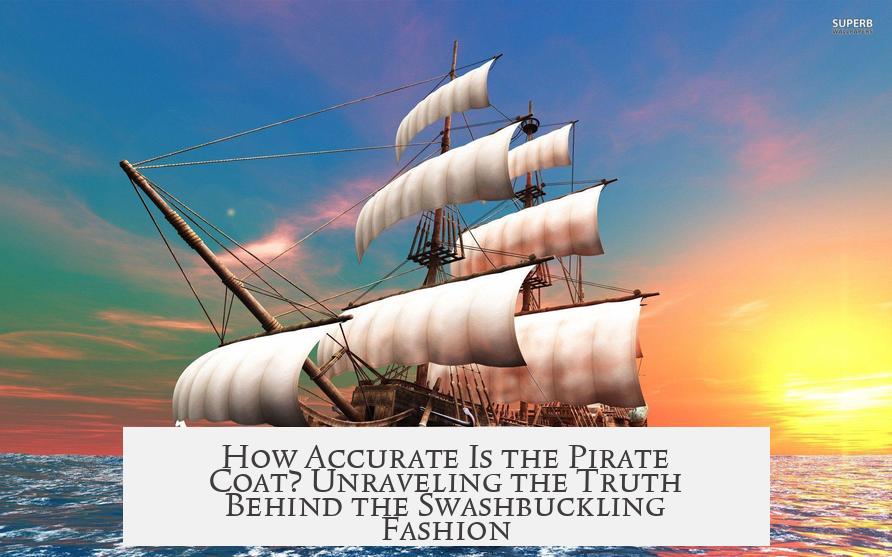
When you imagine a pirate, what’s the first thing that comes to mind? A swishy coat, probably, draped dramatically over the shoulders. But how accurate is this beloved pirate coat? Is it just Hollywood wizardry, or does it have solid roots in fashion history? Let’s dive into the threads of time to find out.
The Pirate Coat’s Historical Backbone: The Frock Coat
First off, yes, the “pirate coat” does have a real historical basis. It’s mainly inspired by the frock coat, a standard gentleman’s wear during the Golden Age of Piracy—the late 17th and early 18th centuries. This was the era when notorious sea dogs roamed the oceans.
The frock coat wasn’t just some flamboyant costume piece. It was the go-to top layer for men across European societies, from the nobility right down to savvy pirate captains. That’s right, pirate captains likely sported these coats, not for style points alone but as everyday wear.
Picture this: A well-crafted frock coat, made of velvet or wool, with a wide skirt and button details running down the front. This is not a fancy Halloween outfit but genuine historic wear, as seen in surviving garments and portraits from the period. The iconic image we have is rooted in reality, just not perfectly.
From Doublet to Coat: An Evolution of Style
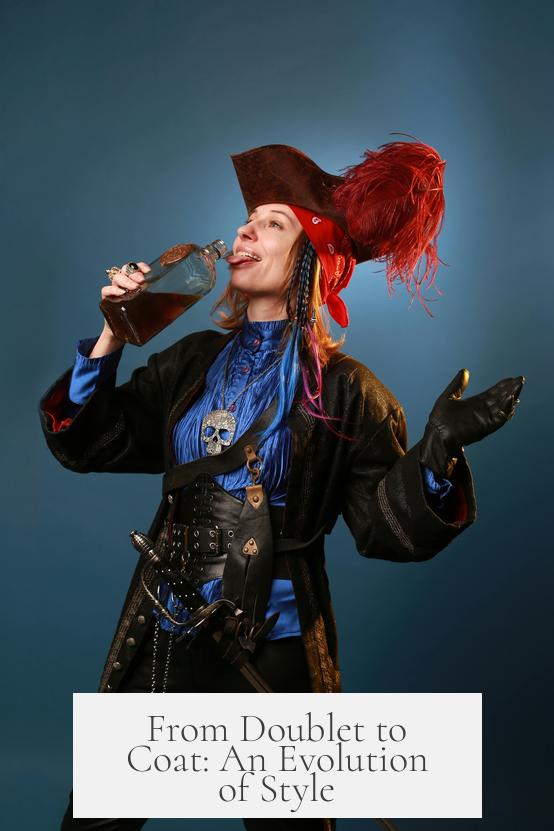
Before frock coats ruled the seas, men wore doublets—short, waist-length jackets. That changed in the mid-1600s, thanks to shifting royal fashion codes, notably from England’s King Charles II, who swapped doublets for longer, looser coats inspired by Eastern styles. This fashion reform influenced everyone, even pirates.
Early coats usually featured small buttons all the way down the front, large turn-back cuffs, and pockets placed right over the front of the thighs—sometimes vertical slits, sometimes horizontal flaps.
By the 1700s, coats became a bit roomier, with wider skirts and sleeves that flared out at the wrists. The button layout and neckline changed, too, reflecting ongoing trends. But the overall silhouette remained fairly consistent: practical, tailored, and somewhat elegant.
Modern Pirate Coats: Fact or Fantasy?
Now here’s where things get tricky. Not all “pirate coats” you see today nail the historical details. Take the Dracula Clothing coat, a popular costume staple. It features a buttoned-down revers and turn-down collar, which actually belong to men’s coats from the late 18th century — a little later than the Golden Age of Piracy.
Plus, Dracula’s coat is slimmer and has pockets set too high and too far back compared to historical models. The cuffs are buttoned differently than they’d have been back then.
On the other hand, some modern creations, like an Etsy pirate coat trimmed with yellow braid, get closer to the mark. The trim is similar to styles from the 1690s. But even here, the cuff buttons sit near the wrist rather than higher up the arm, which isn’t quite right.
| Coat Feature | Historical Accuracy | Modern Missteps |
|---|---|---|
| Button placement | Buttons spaced down the front, pockets aligned low and frontward | Buttons too slim, pockets too high or misaligned |
| Collars and cuffs | Turn-back cuffs buttoned on top of the arm, close collar | Turn-down collar, cuffs buttoned along length or near wrist |
| Body fit | Looser, fuller skirts and sleeves that flare at the wrist | Tighter, slim fit in modern coats |
How Pop Culture Shapes Our Pirate Coat Expectations
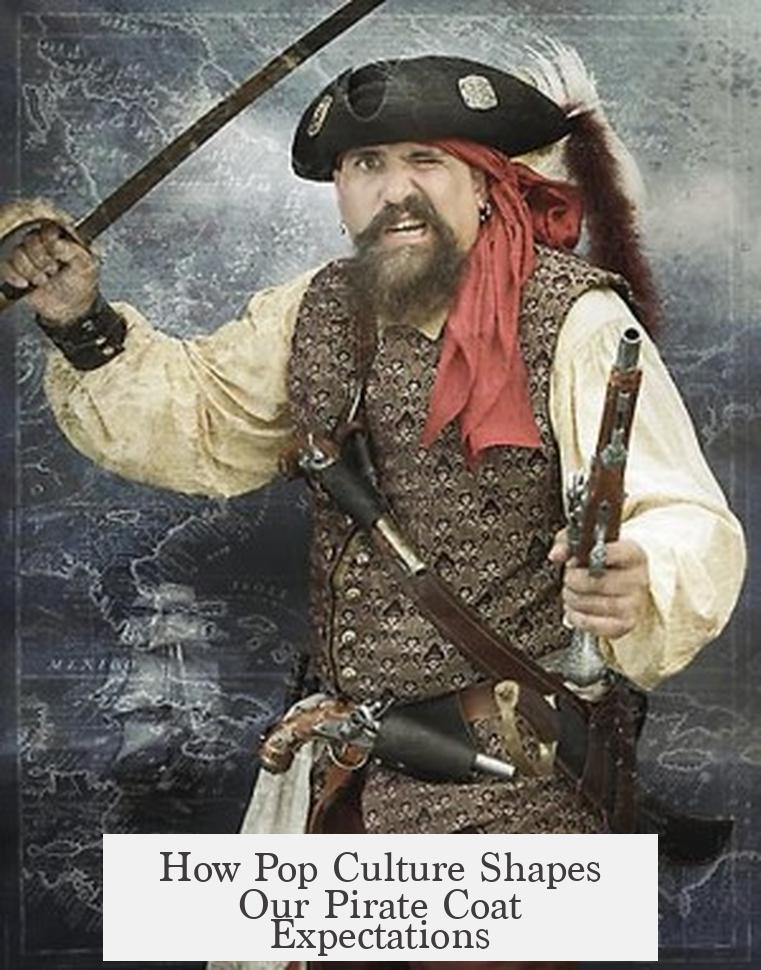
So, where did our cultural image of the pirate coat get so exaggerated and cemented? Hollywood’s hand is huge here.
Movies and TV shows have immortalized the pirate silhouette, mixing historical elements with theatrical flair. Characters like Robert Louis Stevenson’s Long John Silver, brought to life by actors such as Robert Newton in the 1950s, burned that image in our brains. Newton popularized the pirate accent and by extension, the look.
These portrayals often marry bits from various eras and styles. The result: a swashbuckling ideal that’s part fact, part fiction, and all flair. Hollywood’s stamp is both a blessing and a bane—it keeps the pirate alive in popular imagination but sometimes warps factual accuracy.
Why Does This Matter? Practical Takes on Pirate Coat Accuracy
If you’re a history buff, cosplayer, or someone picking a pirate coat for Halloween, knowing these details makes a difference. Wearing a coat that’s too slim or with the wrong collar is like sailing a ship with a leaky sail—something feels off, even if folks can’t pinpoint why.
Here are practical tips to get closer to the real deal:
- Look for coats inspired by frock coats from the late 1600s to early 1700s—not just any old period coat.
- Check for roomy skirts on the coat and sleeves that flare at the wrist, with turn-back cuffs.
- Buttons should run the front length with enough spacing; pockets align low and frontward, not too high.
- Watch collars — avoid turn-down collars common in later 18th century styles.
- If buying, choose coats with natural fabrics and traditional trims, steering clear from shiny polyester braids unless you want a flashy party pirate.
Wearing a historically-informed pirate coat feels more authentic. Plus, you get to impress fellow history nerds at the next costume ball or Renaissance fair.
Final Thoughts: The Pirate Coat’s True Story
To sum up, the pirate coat is definitely based on real clothes worn during the Golden Age of Piracy, particularly frock coats worn roughly between the late 17th and early 18th centuries. However, modern recreations often mix styles from later decades or prioritize style over accuracy, sometimes sacrificing history for fashion.
Our mental picture of the pirate coat owes much to Hollywood’s creative license rather than textbook costume creation. That’s not necessarily a bad thing—it keeps pirates bold and exciting. But if you want to sail the seas of authenticity, reach for a coat with room to move, correctly placed pockets and buttons, and the right cuff and collar styles.
So, seasoned pirate or landlubber, next time you don your pirate coat, ask yourself—are you heading out to loot and plunder in a true-to-history frock, or rocking a Hollywood remix? Either way, you’ll look unmistakably pirate-y, and isn’t that what counts most on the high seas of imagination?
What historical garment is the pirate coat based on?
The pirate coat is modeled after the frock coat, a fashionable gentleman’s coat from the late 17th to early 18th century. It was a common top layer worn by men during the Golden Age of Piracy and likely by pirate captains of European origin.
How does modern pirate coat design differ from historical coats?
Modern versions often have stylistic errors such as slim cuts, misplaced pockets, and incorrect cuff placements. For example, some coats feature buttoned-down revers and turn-down collars typical of later 18th-century styles, not the earlier period linked to most pirates.
Did pirate coats evolve from earlier clothing styles?
Yes. Pirate coats evolved from the doublet in the mid-17th century. Over time, details like cuff styles, pocket placement, and skirt fullness changed, reflecting broader fashion trends of the time.
How has popular culture influenced our image of pirate coats?
Films and literature have shaped the common pirate coat image, often exaggerating features or mixing styles. Hollywood portrayals, especially from mid-20th century movies, have reinforced a specific look that may not be fully accurate historically.
Are trims and decorations on modern pirate coats historically correct?
Some trims, like braid on certain reproductions, resemble 1690s fashion but often use modern materials like polyester. Placement of buttons and cuff styles also vary and may not follow historical accuracy closely.
